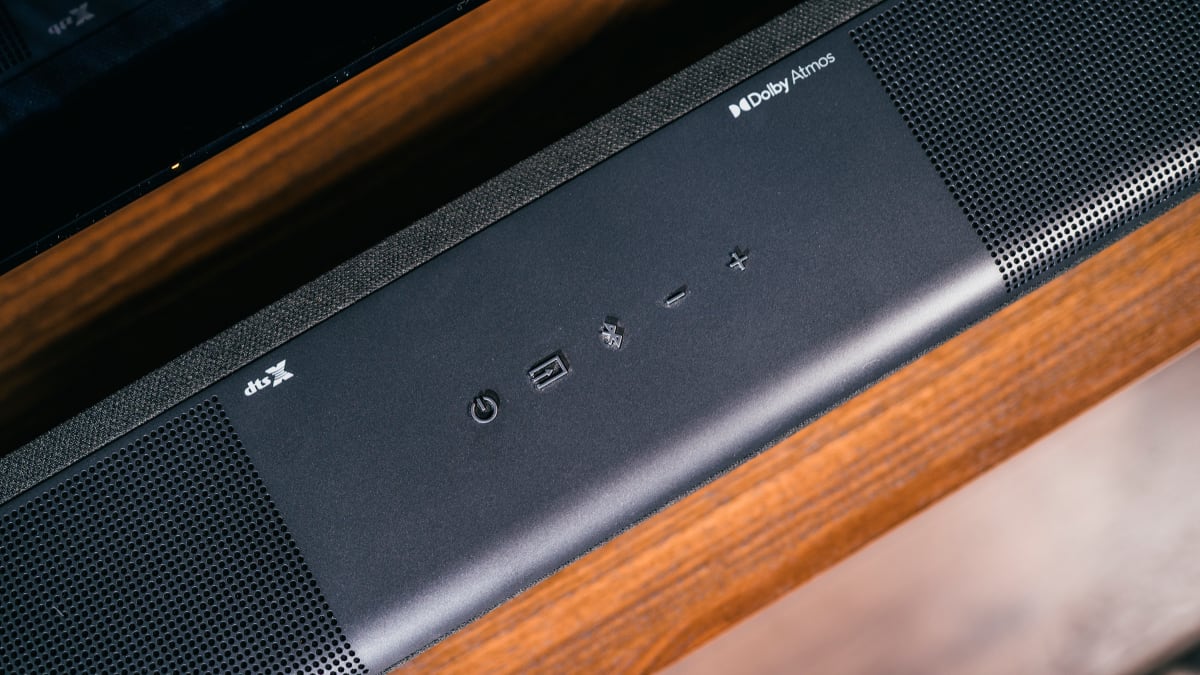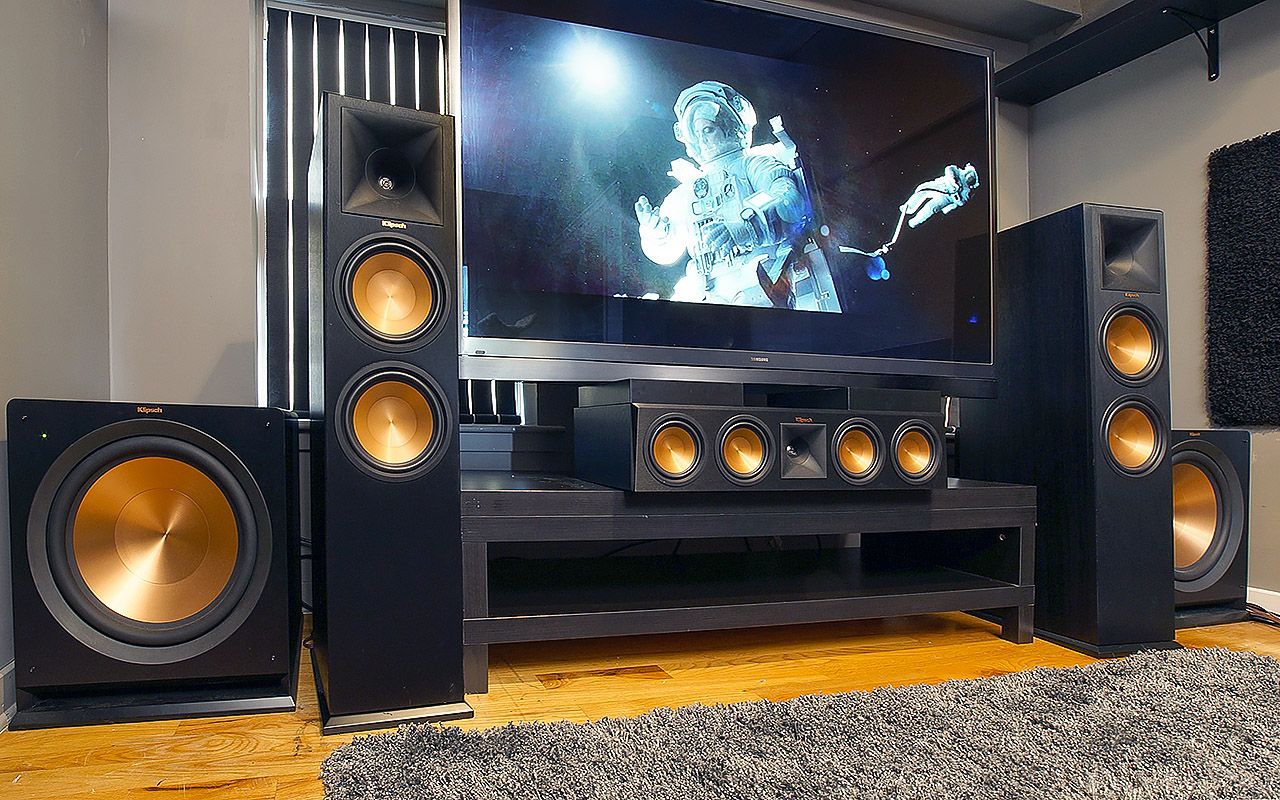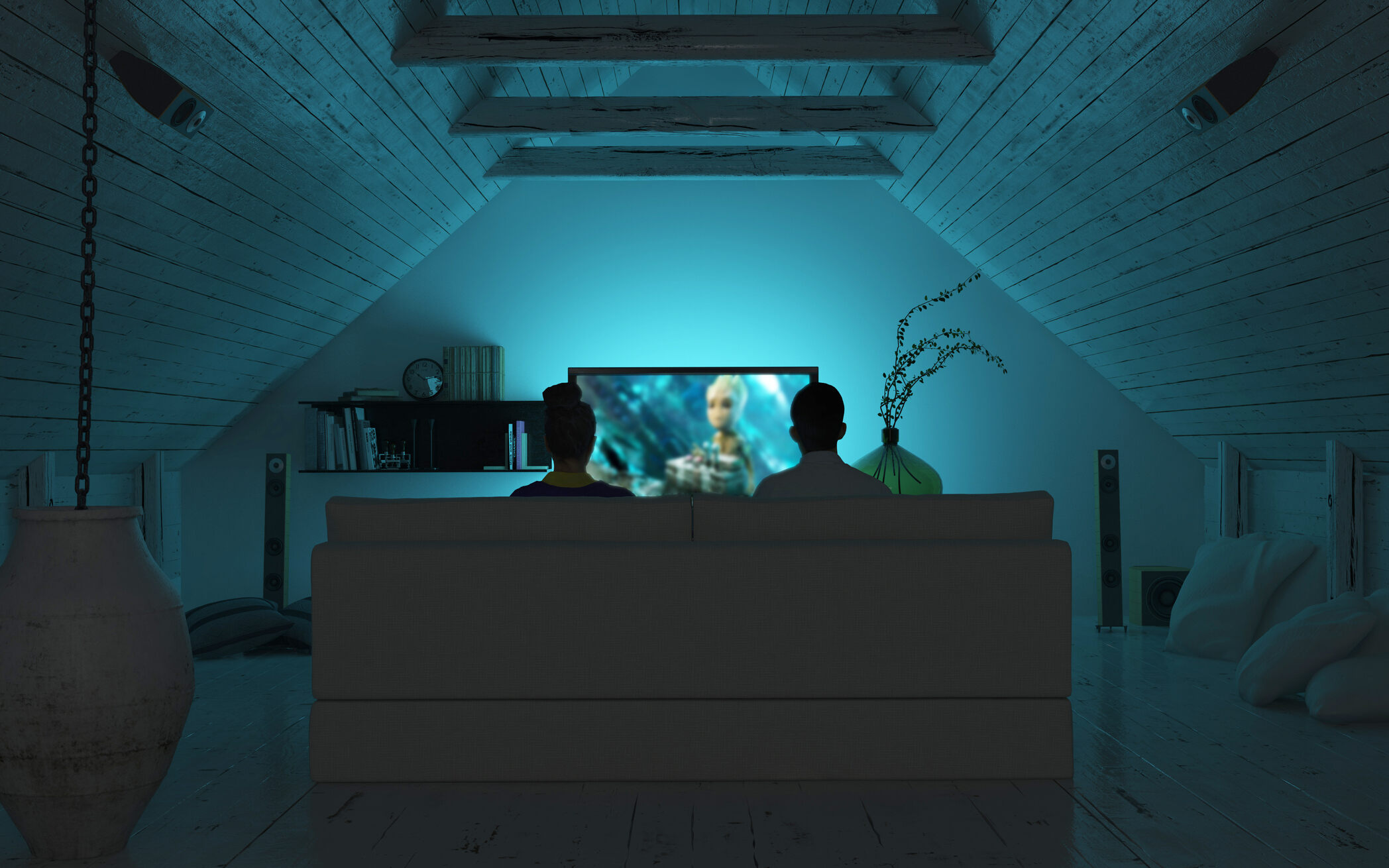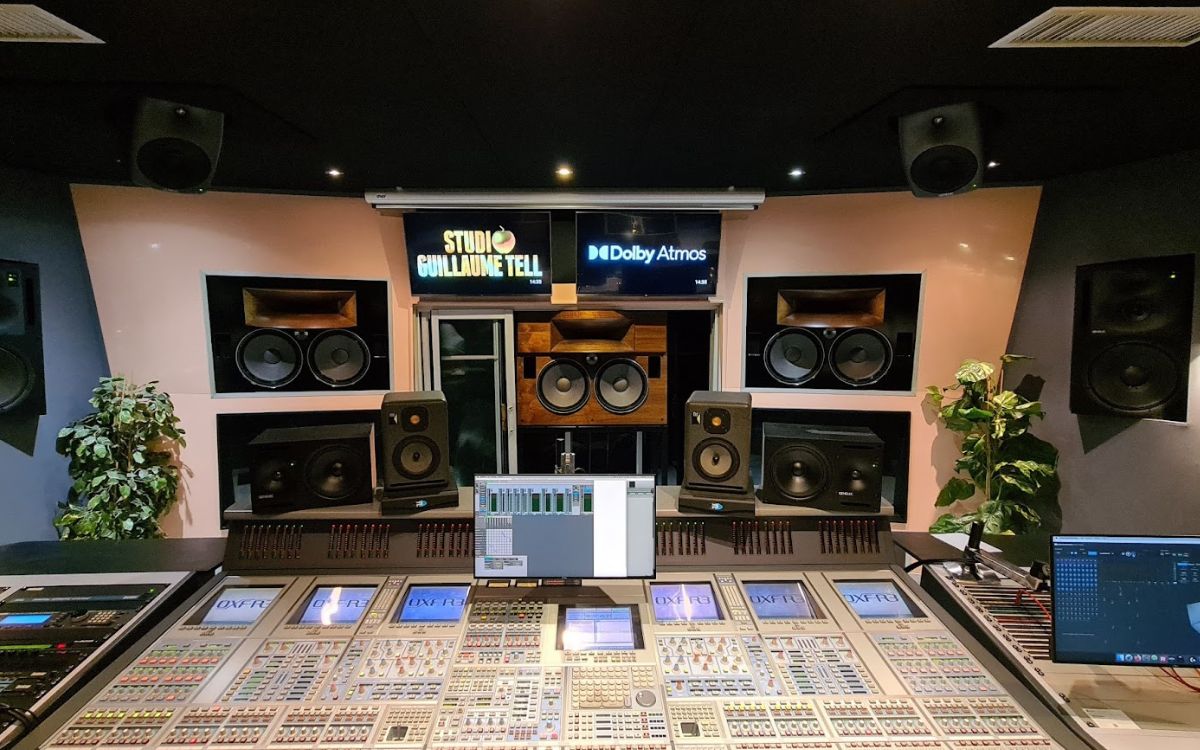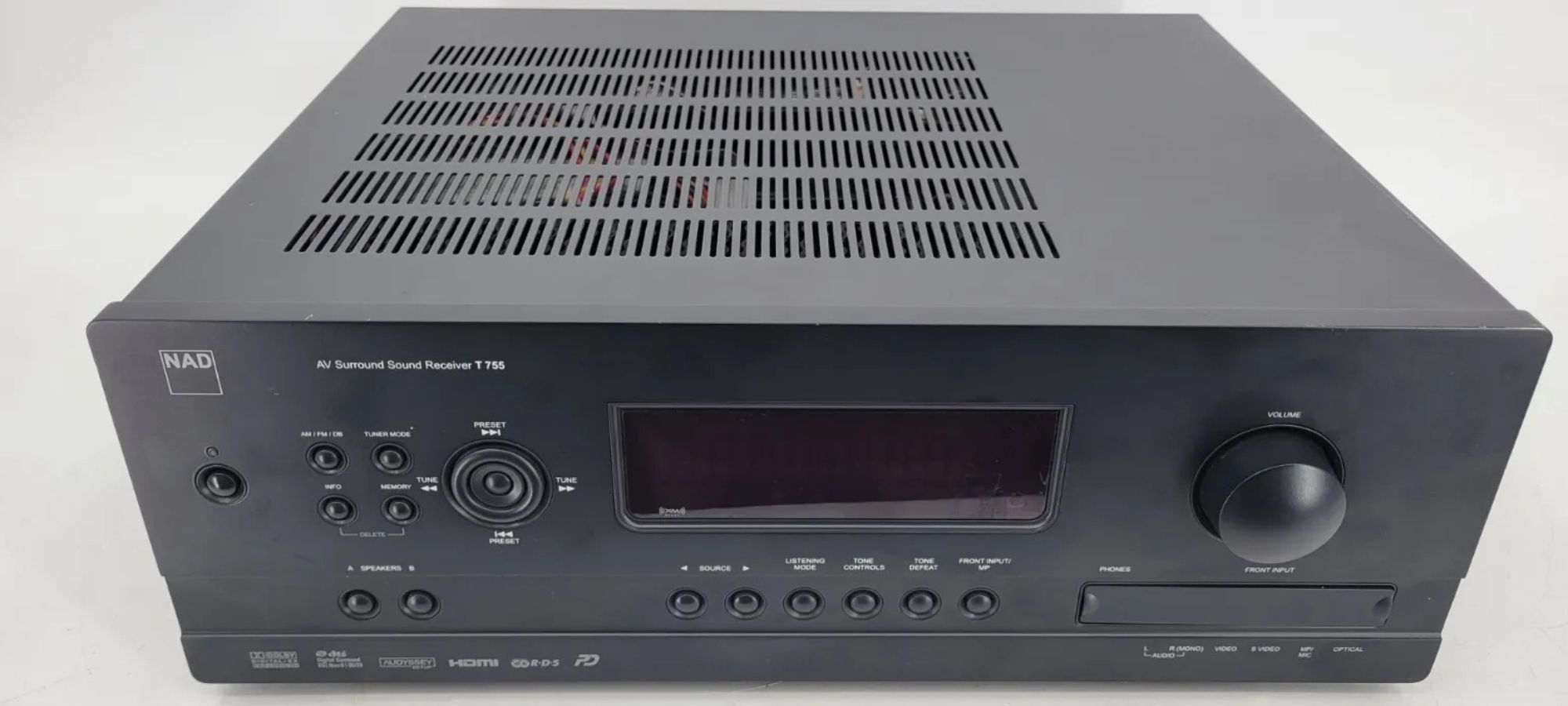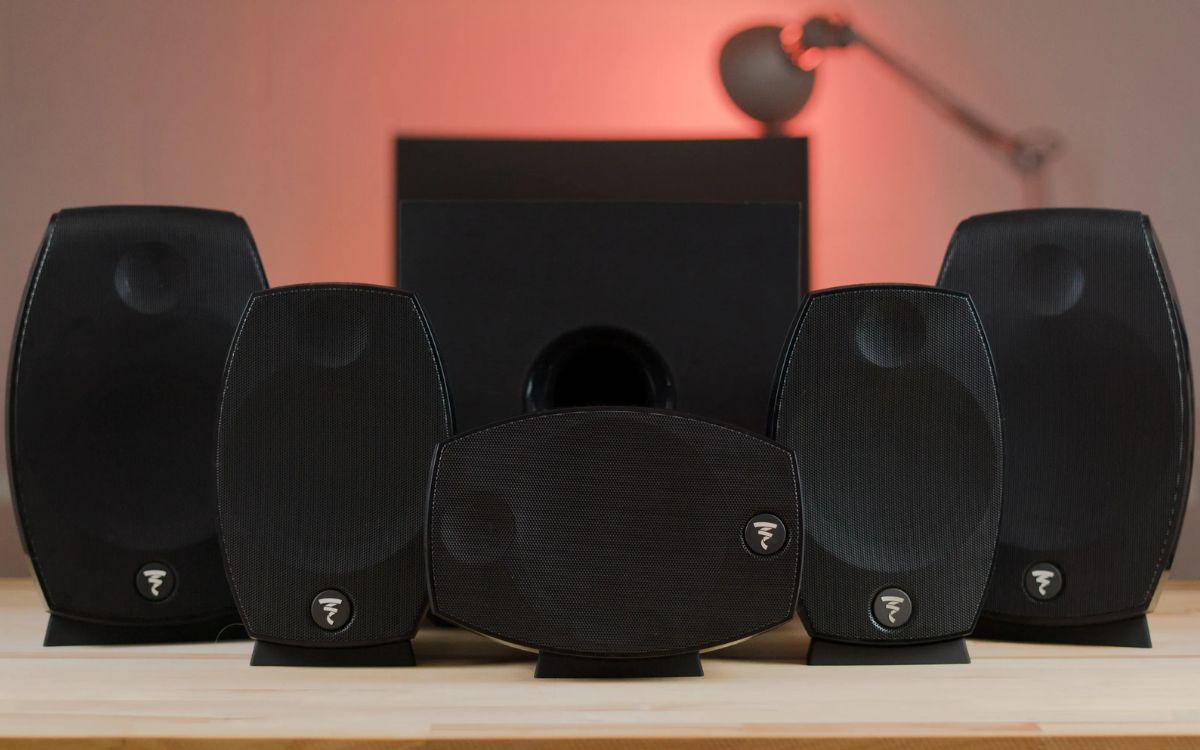Home>Production & Technology>Surround Sound>What Is 5.2 Surround Sound
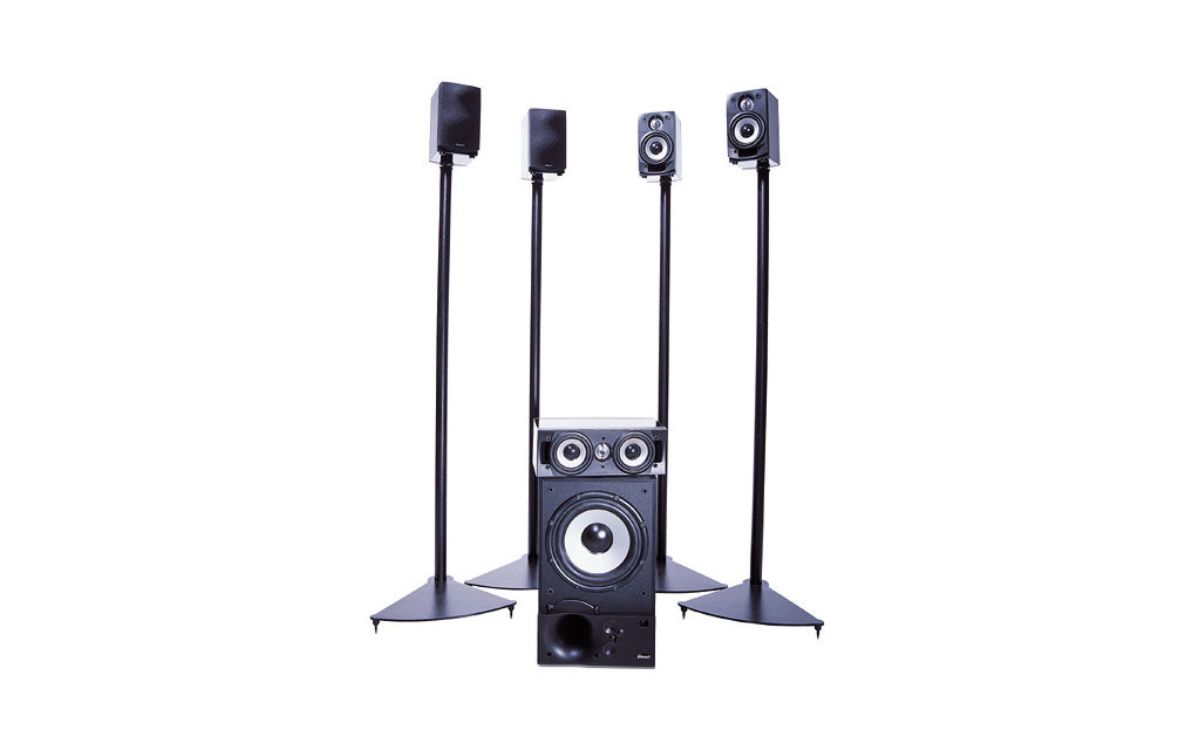

Surround Sound
What Is 5.2 Surround Sound
Modified: February 18, 2024
Discover the immersive experience of 5.2 surround sound. Enhance your audio with premium surround sound technology and elevate your entertainment to a whole new level.
(Many of the links in this article redirect to a specific reviewed product. Your purchase of these products through affiliate links helps to generate commission for AudioLover.com, at no extra cost. Learn more)
Table of Contents
- Introduction
- Definition of 5.2 Surround Sound
- How 5.2 Surround Sound Works
- Key Components of a 5.2 Surround Sound System
- Advantages of 5.2 Surround Sound
- Disadvantages of 5.2 Surround Sound
- Comparison with Other Surround Sound Systems
- Popular Brands and Models of 5.2 Surround Sound Systems
- Setting Up a 5.2 Surround Sound System
- Tips for Optimizing a 5.2 Surround Sound Experience
- Conclusion
Introduction
Welcome to the immersive world of 5.2 surround sound! If you’re a movie enthusiast, a gamer, or a music lover, you know that sound quality plays a crucial role in enhancing your audiovisual experience. Surround sound systems provide a captivating audio environment that makes you feel like you’re right in the middle of the action. While many people are familiar with basic surround sound setups like 5.1 or 7.1, 5.2 surround sound is an advanced configuration that takes your audio immersion to the next level.
Unlike traditional stereo setups, which provide audio from two speakers, surround sound systems use multiple speakers strategically placed around the room to create a more realistic and enveloping audio experience. The numbers in “5.2” refer to the total number of speakers and subwoofers in the system. The “5” represents the five main speakers, while the “2” indicates the two subwoofers.
With 5.2 surround sound, you can enjoy enhanced sound effects, pinpoint audio accuracy, and a dynamic range that brings your favorite content to life. Whether you’re watching an action-packed movie, playing a video game, or listening to your favorite music, a 5.2 surround sound system ensures that you don’t miss out on any audio detail. In this article, we’ll dive deeper into the world of 5.2 surround sound, exploring its definition, how it works, its advantages and disadvantages, popular brands and models, and tips for optimizing your setup.
Definition of 5.2 Surround Sound
5.2 surround sound is a configuration of surround sound system that utilizes five main speakers and two subwoofers to create an immersive audio experience. The “5” in 5.2 refers to the five main speakers, while the “2” indicates the two subwoofers. This configuration is an upgrade from the more common 5.1 surround sound system, which features five main speakers and one subwoofer.
The five main speakers in a 5.2 surround sound system are typically positioned in a specific arrangement. Three speakers – known as the front left, front center, and front right speakers – are placed in front of the listener. These speakers handle dialogue, sound effects, and the majority of the audio content. Additionally, two surround speakers – the rear left and rear right – are positioned behind the listener to provide ambient sound and surround effects.
The two subwoofers in a 5.2 setup are responsible for handling low-frequency sounds and adding depth to the audio experience. Subwoofers are designed to reproduce bass frequencies, making explosions, rumbling, and other low-end sounds more impactful and realistic. The use of two subwoofers in a 5.2 configuration provides a more pronounced and deep bass response compared to the single subwoofer used in 5.1 systems.
One important aspect of 5.2 surround sound is the channel separation it offers. Each speaker in the system is assigned a specific channel, allowing for the localization of sound effects. This means that when watching a movie or playing a game, you can discern the direction of sounds and experience a more accurate audio representation of the action happening on screen.
Overall, 5.2 surround sound brings a heightened level of immersion and realism to your audiovisual experience. With its dual subwoofer setup and precise speaker arrangement, this configuration delivers powerful sound output, enhanced detail, and a more encompassing soundstage compared to other surround sound systems.
How 5.2 Surround Sound Works
5.2 surround sound works by utilizing multiple speakers and subwoofers to create a three-dimensional audio environment. The main goal is to immerse the listener in a surround sound field, where sounds originate from different directions, accurately recreating the audio as intended by the content creator.
When you’re watching a movie or playing a game with a 5.2 surround sound system, each speaker in the setup is responsible for reproducing specific audio channels. The front left, front center, and front right speakers handle most of the dialogue and sound effects, while the surround speakers create ambient and directional sounds. The two subwoofers deliver powerful low-frequency sounds, adding depth and impact to explosions, crashes, and other bass-heavy effects.
The process begins with the audio source, whether it’s a Blu-ray player, gaming console, or media player, sending a signal to the surround sound receiver. The receiver decodes the audio signal and distributes it to the appropriate speakers and subwoofers based on the channel assignment. This ensures that the audio is balanced and directed to the correct speaker for accurate sound localization.
With the front speakers located in front of the listener, they create a soundstage that allows for clear and focused dialogue and sound effects. The center speaker, in particular, plays a crucial role in delivering centered and clear dialogue, making it easier to understand conversations or movie lines. The left and right front speakers provide a wider stereo image, enhancing the audio experience.
The surround speakers, positioned behind the listener, add depth and immersion to the audio. They are responsible for recreating ambient sounds, such as rain falling or birds chirping, and providing directional effects that make you feel like you’re in the middle of the action. These speakers contribute to the overall sense of space and realism in the audio environment.
The two subwoofers in a 5.2 setup are dedicated to reproducing low-frequency sounds. They handle deep bass and sub-bass frequencies, delivering impactful rumbling effects, explosions, and other low-end sounds. The dual subwoofers provide a more even bass distribution throughout the room, resulting in a balanced and immersive audio experience.
By combining the power of multiple speakers and subwoofers, 5.2 surround sound creates a multidimensional audio field that enhances the entertainment experience. It allows you to hear every detail, feel the impact of intense moments, and be fully immersed in the audio world of your favorite movies, games, and music.
Key Components of a 5.2 Surround Sound System
A 5.2 surround sound system consists of several key components that work together to create a captivating audio experience. Understanding these components will help you build and optimize your setup for the best possible sound quality. Let’s take a closer look at each one:
- Main Speakers: The main speakers are the foundation of your 5.2 surround sound system. Typically, there are five main speakers in a 5.2 setup: front left, front center, front right, rear left, and rear right. These speakers are responsible for reproducing dialogue, sound effects, and ambient sound to create an immersive audio environment. They should be positioned strategically to optimize sound distribution within your room.
- Subwoofers: The subwoofers in a 5.2 surround sound system handle low-frequency sounds and provide deep, rich bass. Having two subwoofers in the setup allows for better bass distribution and adds more impact to explosions, rumbles, and other low-end effects. Proper placement and calibration of subwoofers are essential to achieve balanced and powerful bass reproduction in your listening space.
- Surround Sound Receiver: The surround sound receiver serves as the control center of your 5.2 setup. It receives audio signals from your source devices (e.g., Blu-ray player, gaming console) and distributes them to the relevant speakers and subwoofers. Make sure the receiver you choose supports 5.2 surround sound and has the necessary audio inputs and outputs to connect your devices.
- Audio Source: The audio source can be any device that outputs audio, such as a Blu-ray player, gaming console, or media streamer. It is connected to the surround sound receiver, which decodes the audio signals from the source and distributes them to the speakers and subwoofers. High-quality audio sources will ensure that you get the best sound reproduction from your 5.2 system.
- Speaker Cables: Speaker cables are used to connect the main speakers and subwoofers to the surround sound receiver. It is important to use high-quality speaker cables that are of sufficient gauge to minimize signal loss and maintain optimal audio performance. The length of the cables will depend on the distance between your audio components and speakers.
- Mounts and Stands: Mounts and stands are essential for securely positioning your main speakers and surround speakers in the optimal locations within your listening space. Wall mounts, floor stands, and ceiling mounts are available to accommodate different room layouts and speaker types. Proper speaker placement is crucial for achieving balanced sound and accurate soundstage.
By ensuring you have these key components in your 5.2 surround sound system and optimizing their placement and calibration, you can create an immersive and high-quality audio experience that brings your favorite movies, games, and music to life.
Advantages of 5.2 Surround Sound
5.2 surround sound offers several advantages that make it a popular choice for audio enthusiasts and home theater setups. Let’s explore some of its key benefits:
- Enhanced Immersion: With 5.2 surround sound, you can truly immerse yourself in the audio experience. The additional speakers and subwoofers create a more expansive soundstage, allowing you to feel like you’re in the middle of the action. Whether you’re watching a movie, playing a game, or listening to music, the multi-channel setup adds depth, dimension, and realism to the audio.
- More Accurate Sound Localization: The use of multiple speakers in a 5.2 configuration enables precise sound localization. This means that you can easily identify the direction from which sounds are coming. You’ll be able to pinpoint the footsteps of a character, the swish of a passing car, or the rustling of leaves with greater accuracy. This accuracy enhances the overall audio experience and adds to the sense of immersion.
- Powerful and Balanced Bass Response: The presence of two subwoofers in a 5.2 setup provides a significant advantage when it comes to bass reproduction. The dual subwoofers deliver deep and impactful bass, resulting in a more immersive experience for explosions and other low-frequency effects. With proper placement and calibration, the bass response is not only powerful but also balanced throughout the room.
- Improved Sound Detail: A 5.2 surround sound system allows for better sound separation and detail. Each speaker in the setup is assigned specific channels, ensuring that different elements of the audio are reproduced accurately and distinctively. This means you can hear subtle nuances, delicate background sounds, and intricacies in the audio that might otherwise go unnoticed in a stereo setup.
- Flexible Placement Options: Having multiple speakers and subwoofers in a 5.2 configuration provides flexibility when it comes to speaker placement. You can position the main speakers strategically for optimal sound projection, while the surround speakers can be placed behind you to create a surround sound effect. The dual subwoofers allow for improved bass distribution, and you have the freedom to experiment with placement to find what works best for your room.
Overall, 5.2 surround sound adds depth, immersion, and realism to your audio experience. It offers improved sound localization, accurate sound reproduction, powerful bass response, and flexibility in speaker placement. Whether you’re a cinephile, a gamer, or an avid music lover, a 5.2 surround sound system brings your audio content to life like never before.
Disadvantages of 5.2 Surround Sound
While 5.2 surround sound offers numerous advantages, it’s important to consider the potential drawbacks associated with this configuration. Here are some of the key disadvantages to be aware of:
- Cost: One of the main disadvantages of a 5.2 surround sound system is the cost. Compared to a basic stereo setup or even a 5.1 system, the additional speakers and subwoofers can add up to a higher overall price. The cost includes not only the speakers themselves but also wiring, installation, and potentially additional audio equipment such as a receiver. It’s essential to consider your budget and prioritize your audio needs before investing in a 5.2 setup.
- Space Requirements: Another consideration is the amount of space required for a 5.2 surround sound system. Having multiple speakers and subwoofers means you need enough room to accommodate them and position them correctly. Main speakers should be placed in front of the listener, while surround speakers need space behind the listening area. Additionally, the placement and positioning of subwoofers can impact their performance. If you have limited space, a 5.2 setup may not be feasible or may require compromises in terms of placement and sound quality.
- Complex Installation: Setting up a 5.2 surround sound system can be more complex compared to a simpler audio configuration. The wiring involved in connecting multiple speakers and subwoofers can be challenging, especially if you are not familiar with audio equipment or home theater setups. Proper calibration and positioning of the speakers and subwoofers are crucial for optimal sound quality and performance. It may require technical expertise or professional help to ensure everything is connected and configured correctly.
- Room Acoustics: The acoustic properties of your room can significantly impact the performance of a 5.2 surround sound system. Factors such as room size, shape, and construction materials can affect sound reflection, resonance, and imaging. In some cases, certain room characteristics may lead to audio inconsistencies or undesirable sound reflections. Room acoustic treatments, such as acoustic panels or bass traps, may be necessary to alleviate these issues and optimize the listening experience.
- Compatibility: Compatibility can be a potential issue with a 5.2 surround sound system. Not all audio content is created with multi-channel sound in mind. Some older movies or music recordings may not be mixed specifically for surround sound, resulting in limited utilization of all the speakers in the setup. Additionally, certain audio formats or streaming services may have limitations or compatibility issues with a 5.2 configuration. It’s important to ensure that your audio sources and devices are compatible to experience the full benefits of a 5.2 setup.
Considering these disadvantages will help you make an informed decision about whether a 5.2 surround sound system is the right choice for your specific needs, budget, and space constraints. By weighing the pros and cons, you can determine if the advantages outweigh the potential limitations and enjoy an immersive audio experience to suit your preferences.
Comparison with Other Surround Sound Systems
When it comes to surround sound systems, there are various configurations available, each with its own strengths and limitations. Let’s compare 5.2 surround sound with other popular setups:
- 5.1 Surround Sound: 5.1 surround sound is a widely adopted configuration that consists of five main speakers and one subwoofer. The primary difference between 5.2 and 5.1 systems is the number of subwoofers. While a 5.1 setup relies on a single subwoofer for low-frequency sounds, 5.2 systems incorporate two subwoofers for more impactful bass. This dual subwoofer setup in 5.2 offers improved bass response and a more immersive audio experience compared to 5.1 configurations.
- 7.1 Surround Sound: 7.1 surround sound takes the audio experience even further by adding two additional speakers to the setup. With 7.1, you have the main front left, front center, front right, rear left, rear right speakers, and the addition of two rear-back speakers. This configuration creates an even more enveloping soundstage and enhances sound localization. However, compared to 5.2, 7.1 may require more space and carries a higher cost due to the additional speakers.
- Dolby Atmos: Dolby Atmos is an innovative audio technology that revolutionizes the surround sound experience. Unlike traditional setups that focus on speaker placement, Dolby Atmos employs object-based audio, allowing sound to move freely in a three-dimensional space. This means sounds can be positioned with precise accuracy, including overhead, for a truly immersive audio experience. While 5.2 surround sound delivers excellent audio immersion, Dolby Atmos takes it to the next level by adding a height dimension. However, implementing Dolby Atmos requires compatible hardware and content, which may come at a higher cost.
- Stereo Systems: Stereo systems are the most basic audio setups, consisting of two speakers, typically placed in front. While stereo systems are suitable for listening to music and general audio playback, they lack the immersive qualities of surround sound configurations. 5.2 surround sound, with its multiple speakers and subwoofers, offers a more dynamic audio experience, ensuring better sound separation, accurate sound localization, and a more enveloping audio environment.
Ultimately, the choice between different surround sound configurations depends on your specific needs, space limitations, and budget. While 5.2 surround sound provides a compelling balance between immersive sound and cost-effectiveness, systems like 7.1 or Dolby Atmos offer even greater audio immersion, albeit at a higher price point. Take into account factors such as room size, desired audio fidelity, and the types of content you enjoy when deciding which surround sound system is the best fit for you.
Popular Brands and Models of 5.2 Surround Sound Systems
When it comes to 5.2 surround sound systems, there are several popular brands that offer high-quality audio solutions. Let’s explore some of the top brands and their notable models:
- Sony: Sony is a well-known brand in the audio industry and offers a range of 5.2 surround sound systems. The Sony STR-DH590 is a popular model that provides excellent sound quality and features like 4K HDR compatibility and Bluetooth connectivity.
- Yamaha: Yamaha is recognized for its audio prowess and offers a diverse lineup of 5.2 surround sound systems. The Yamaha RX-V385 is a highly regarded model that delivers immersive sound, supports 4K Ultra HD, and features Yamaha’s proprietary Cinema DSP technology for enhanced audio performance.
- Denon: Denon is known for its premium audio equipment and has several acclaimed 5.2 surround sound systems. The Denon AVR-S750H is a top choice, boasting impressive sound quality, support for the latest audio formats, and compatibility with voice control systems like Alexa.
- Pioneer: Pioneer is a reputable brand that offers a range of high-quality audio systems. The Pioneer VSX-534 is a popular 5.2 receiver that features Dolby Atmos support, 4K Ultra HD pass-through, and intuitive setup options.
- Onkyo: Onkyo is well-regarded for its audio performance and durability. The Onkyo TX-NR696 is a notable 5.2 receiver that offers robust sound, supports advanced audio formats, and features built-in Wi-Fi and Bluetooth for seamless connectivity.
When choosing a 5.2 surround sound system, it’s important to consider your budget, specific audio needs, and desired features. These popular brands offer a variety of models with different price points and functionalities, allowing you to find the system that best suits your requirements.
Additionally, it’s worth exploring customer reviews, professional recommendations, and comparing specifications to ensure that the system you select meets your expectations in terms of sound quality, connectivity options, and compatibility with your audio sources. Remember that while these brands have a strong reputation, it’s always essential to research and consider individual models within their range, as different models may offer varying features and performance levels.
Setting Up a 5.2 Surround Sound System
Properly setting up a 5.2 surround sound system is essential to achieve optimal audio performance and immersion. Follow these general steps to get started:
- Choose the Room: Select a room that can accommodate the speakers and provide an ideal listening environment. Consider factors such as room size, furniture placement, and acoustics.
- Speaker Placement: Position the front left, front center, and front right speakers in front of your viewing area, forming a straight line facing the listener. The rear left and rear right surround speakers should be placed behind the listener at an angle of approximately 110 degrees from the front speakers. Experiment with subwoofer placement to find the optimal location for balanced bass response.
- Connect the Speakers: Connect the speakers to the surround sound receiver using the appropriate speaker cables. Ensure that each speaker is connected to its respective channel output on the receiver.
- Connect the Subwoofers: Connect the subwoofers to the subwoofer outputs on the receiver using subwoofer cables. Follow the manufacturer’s instructions for proper connection and placement.
- Connect the Audio Source: Connect your audio sources, such as a Blu-ray player or gaming console, to the audio inputs on the surround sound receiver using HDMI, optical, or analog cables, depending on the available connectivity options.
- Calibrate the System: Utilize the built-in calibration features of your surround sound receiver to optimize speaker performance and sound balance. Follow the on-screen instructions or refer to the receiver’s user manual to run the calibration. This process will ensure that each speaker is properly balanced and calibrated for your specific room.
- Configure Audio Settings: Access the receiver’s audio settings menu to configure specific audio settings, such as speaker distance, individual speaker levels, and crossover frequencies. Adjust these settings according to your room’s acoustics and personal preferences for optimal performance.
- Test and Fine-Tune: Play content that features surround sound to test the system. Listen carefully to ensure sound is properly distributed, with dialogue and sound effects coming from the correct channels. Make further adjustments if necessary, such as tweaking speaker positioning, levels, or calibration settings.
Remember to consult the user manuals for your specific equipment, as setup procedures may vary. Additionally, consider consulting professional installers or audio experts for assistance, especially if you’re unfamiliar with the intricacies of setting up a surround sound system.
By following these steps and taking the time to properly set up and calibrate your 5.2 surround sound system, you can ensure an immersive and high-quality audio experience that will enhance your movie nights, gaming sessions, and music enjoyment.
Tips for Optimizing a 5.2 Surround Sound Experience
To enhance your 5.2 surround sound experience, consider the following tips for optimizing the audio fidelity and overall immersion:
- Optimal Speaker Placement: Take the time to experiment with speaker placement within your room. Ensure that the front speakers are directed towards the listening area, and the surround speakers are positioned behind the listener at the proper angle. Proper speaker placement can significantly improve soundstage and localization.
- Room Acoustics: Consider the acoustics of your room and make adjustments as needed. Adding acoustic treatments like absorption panels, diffusers, or bass traps can help reduce unwanted reflections and echoes, resulting in a more accurate and balanced sound.
- Improve Subwoofer Performance: Experiment with subwoofer placement to achieve the best bass response. Subwoofers are more forgiving when it comes to placement, so try different positions to find the spot that provides the most even bass distribution. Additionally, fine-tuning the crossover frequency and volume levels of the subwoofers can help integrate them seamlessly with the rest of the speakers.
- Calibration: Regularly calibrate your surround sound system to ensure optimal audio balance and performance. Use the built-in calibration features of your receiver or consider advanced calibration tools for a more accurate setup, adjusting speaker levels, distances, and other settings according to your room’s characteristics.
- Source Material and Formats: Utilize high-quality audio sources that are compatible with surround sound formats. Blu-ray discs, streaming services, and video games with Dolby Digital or DTS audio tracks provide the best surround sound experience. Be sure to select the appropriate audio output settings on your source devices to take advantage of the surround sound capabilities.
- Avoid Overdriving the System: While it may be tempting to crank up the volume and push your surround sound system to its limits, be mindful of avoiding excessive volume levels that could lead to distortion or damage to the speakers. It’s important to enjoy the audio at a comfortable and safe listening level.
- Regular Maintenance: Keep your surround sound system well-maintained by periodically checking cables, connections, and speaker performance. Clean dust and debris from the speakers and subwoofers to ensure longevity and optimal audio quality.
By implementing these tips, you can optimize your 5.2 surround sound system for an immersive and enjoyable audio experience. Remember that room acoustics, speaker placement, and calibration play crucial roles in achieving the best possible sound quality. Take your time to fine-tune and experiment, and don’t hesitate to consult professional installers or audio experts for guidance if needed.
Conclusion
5.2 surround sound offers a compelling audio experience that brings movies, games, and music to life in a whole new way. By utilizing five main speakers and two subwoofers, this configuration creates an immersive soundstage, precise sound localization, and powerful bass response. With 5.2 surround sound, you can fully immerse yourself in the audio, feeling as if you’re part of the action.
While setting up a 5.2 surround sound system may require careful consideration of room size, speaker placement, and calibration, the effort is well worth it. The advantages of enhanced immersion, accurate sound localization, and improved sound detail make the investment worthwhile for audio enthusiasts and entertainment lovers.
When choosing a 5.2 surround sound system, consider reputable brands such as Sony, Yamaha, Denon, Pioneer, and Onkyo, which offer models known for their performance and features. Take into account your budget, room constraints, and specific audio needs when selecting the components for your setup.
To optimize your 5.2 surround sound experience, follow key tips such as optimal speaker placement, room acoustics adjustments, careful subwoofer placement, regular calibration, and using high-quality audio sources. By paying attention to these details and maintaining your system, you can ensure an immersive and satisfying audio experience.
In conclusion, a 5.2 surround sound system opens up a whole new dimension of audio immersion and enjoyment. Whether you’re a movie enthusiast, a dedicated gamer, or a music lover, 5.2 surround sound enhances your audiovisual experience by bringing every detail to life. So, set up your system, fine-tune it to perfection, and get ready for an extraordinary audio journey.

